
I won’t keep you in suspense here. The answer is yes, absolutely. Uninsulated ducts damage your siding in a humid climate in some cases. I recently visited a house in Atlanta that has that very problem. If you haven’t scrolled down yet, look at the photo above. Stare at it for just a bit, and see if you can find where the uninsulated ducts are in that wall and how many there are.
If you didn’t find them all, I’ve highlighted them below. The paint is discolored in those areas and even peeling a bit. This house was built in the 1960s, so they’ve probably had to repaint quite a bit more than they would have liked over the past five decades. And who knows how rotten the sheathing beneath the siding is.
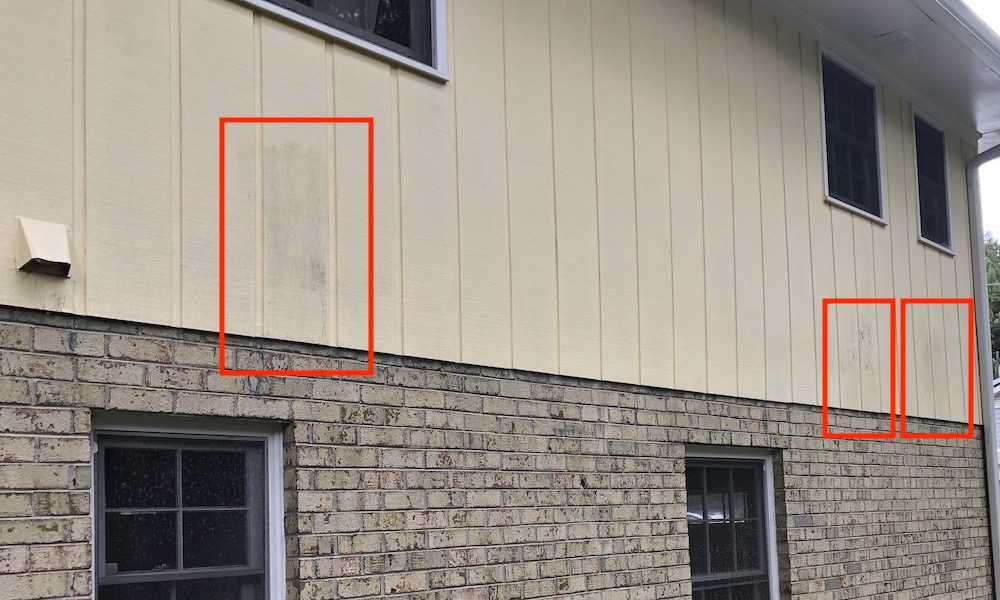
The problem wasn’t limited to that one side of the house, though. Below is another spot right by the front door.
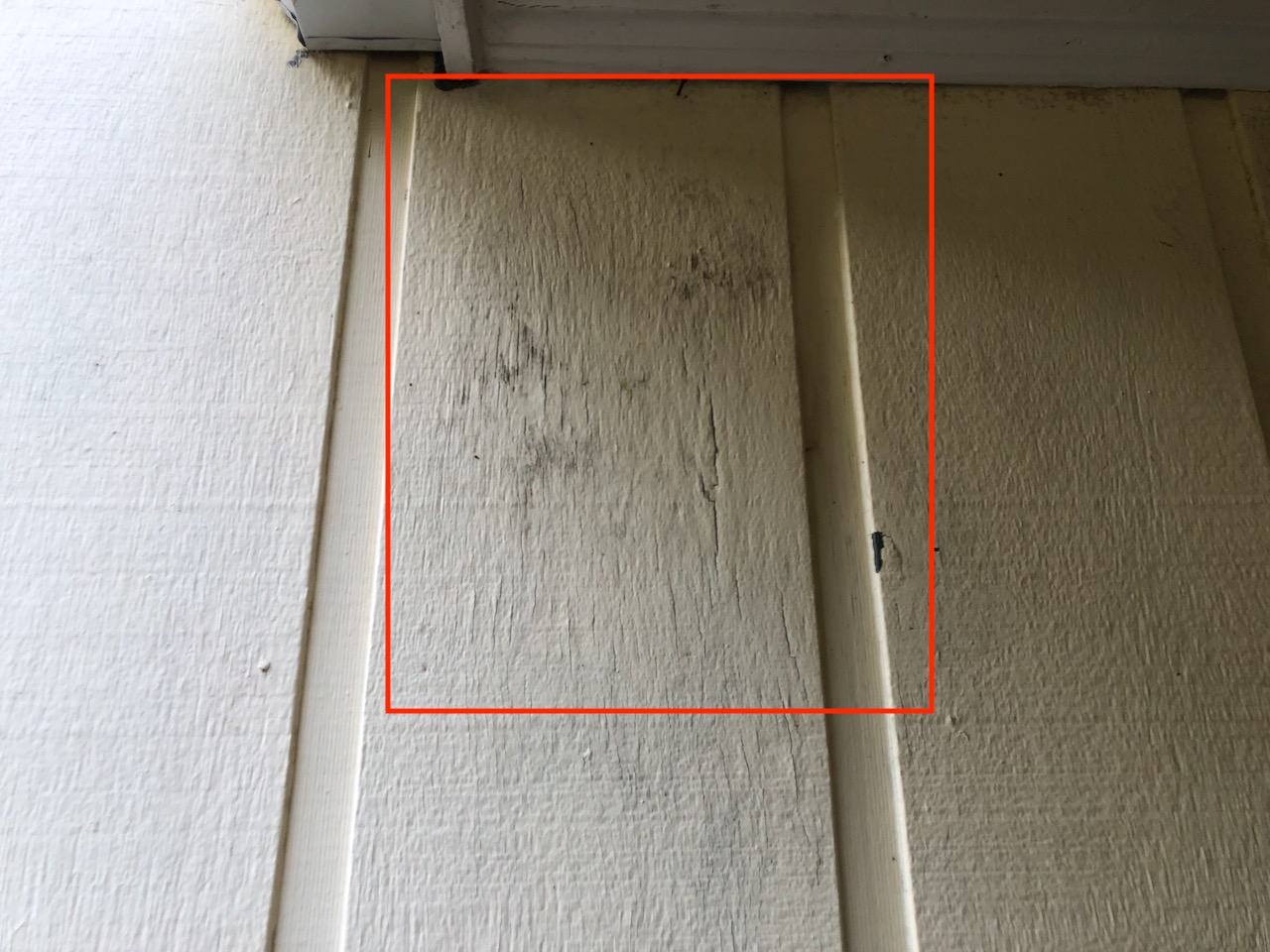
Why does this happen?
As I wrote in an article on the problems with ducts in exterior walls, “Putting cold air into an uninsulated piece of sheet metal in a poorly air-sealed enclosure is a recipe for condensation and mold for homes in humid climates.”
The photo below shows what’s between the siding and the drywall. Most houses here in Georgia have 2×4 walls so there’s no room for insulation. That sheet metal boot gets very cold when the air conditioner is running. If the exterior sheathing behind it isn’t insulated, the sheathing gets very cold. And that makes the siding on the outside cold, too.
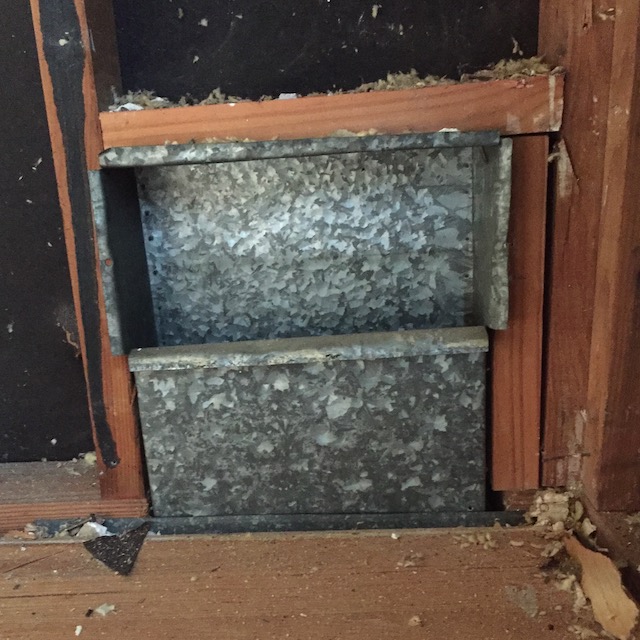
When the sheathing and siding get cold in a humid climate, the wood sucks up moisture from the air. Wet wood is a great place for mold and other stuff to start growing. In fact, I was called to look at this house because of moldy, musty smells and a homeowner who developed health problems after he moved into the house. There was more to his problems than just the uninsulated ducts in exterior walls, though.
What can you do?
You don’t want uninsulated ducts to damage your siding, so you have to apply a little building science here. As I wrote in an article on how to prevent humidity damage, surfaces in contact with humid air—the siding and sheathing in this case—need to be kept warm enough to minimize the accumulation of moisture from the air. To accomplish that, you have a few options:
- Put insulation between the duct and the sheathing or under the siding.
- Move the air conditioner supply vent out of the exterior wall.
- Abandon the exterior wall vents by installing a new heating and cooling system with new ducts and vents. (This is what I’ve done in my house.)
The second of these methods will generally be easier and less expensive, though none is easy. There’s not a quick fix here. The good news is that this is mainly an older home problem. I’m not going to say there aren’t any new homes out there with uninsulated ducts in exterior walls, but it’s really uncommon now.
Do you have any mysteries at your house where the paint is peeling from your siding? Maybe this is the answer. Check to see if those spots line up with where the vents are, as they do in the house shown above.
_________________________________________________________________________
Allison Bailes of Atlanta, Georgia, is a speaker, writer, building science consultant, and the founder of Energy Vanguard. He has a PhD in physics and writes the Energy Vanguard Blog. He is also writing a book on building science. You can follow him on Twitter at @EnergyVanguard.
Weekly Newsletter
Get building science and energy efficiency advice, plus special offers, in your inbox.





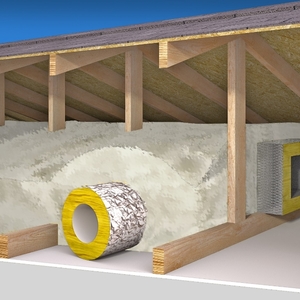
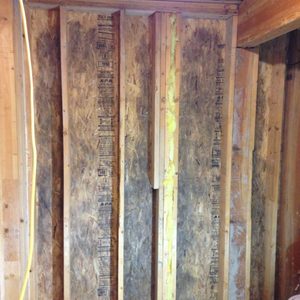
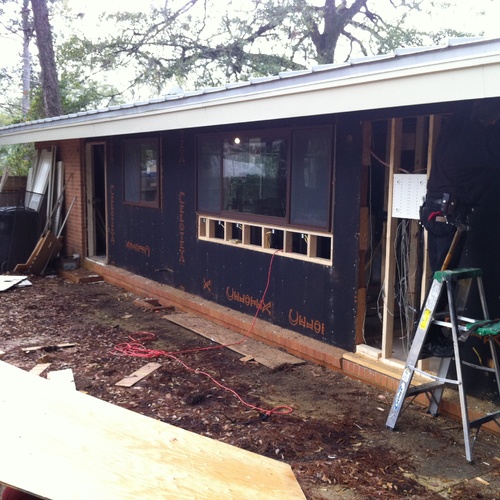
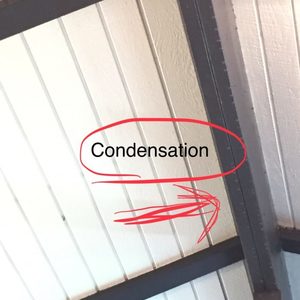






0 Comments
Log in or create an account to post a comment.
Sign up Log in